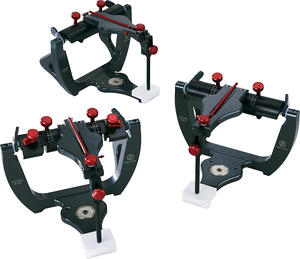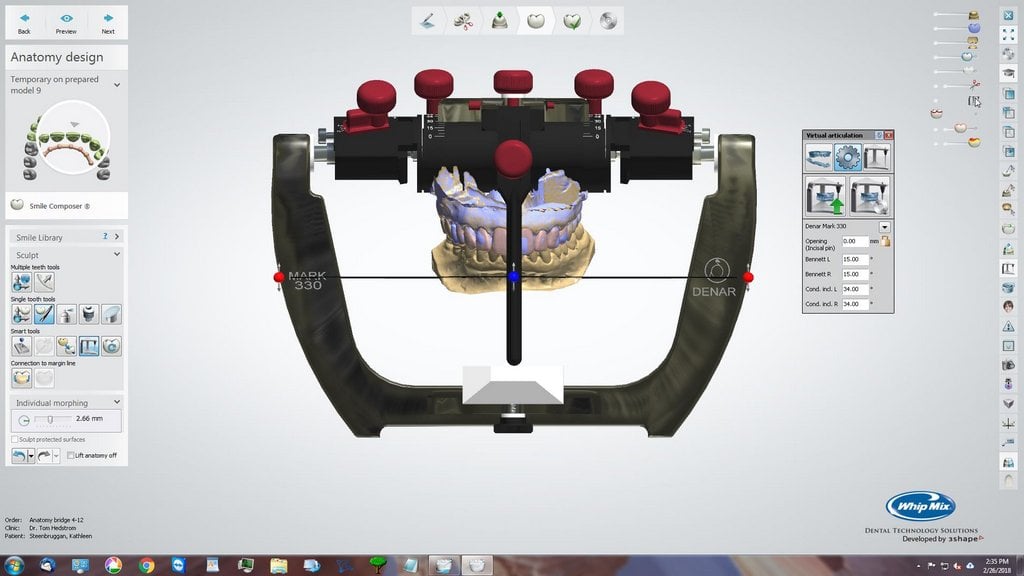 There are many reasons why I would advocate the use of the Mark 300 Series articulators in a dental practice and none of those reasons include 'because I said so'. To begin, it's important to know the difference between the Mark 310, Mark 320, Mark 330 and LabRelator. Why would you use one versus the other depends on what you want to accomplish...
There are many reasons why I would advocate the use of the Mark 300 Series articulators in a dental practice and none of those reasons include 'because I said so'. To begin, it's important to know the difference between the Mark 310, Mark 320, Mark 330 and LabRelator. Why would you use one versus the other depends on what you want to accomplish...
- Perfect for anyone not taking any Lateral and/or Protrusive bite records.
- Fixed at anatomical averages (Condylar Inclination at 25°, Bennett at 15°).
- Great if you're taking a Protrusive record.
- Adjustable Condylar Inclination 0-60°, Fixed Bennett at 15°.
- For the doc who's taking Lateral and/or Protrusive records.
- Adjustable Condylar Inclination 0-60°, Adjustable Bennett 0-15 and Adjustable Immediate Side Shift 0-2mm.
- For the office that mounts their own models.
- Fixed at anatomical averages, locked in centric, no moving parts help eliminate human error that occurs in the mounting process.
Now that you know the differences between the instruments, you've probably mentally picked out which ones you want in your practice. But why this series? Why should you invest in one (or two) of these articulators? What sets them apart from others on the market?
My number one reason is and always will be the accuracy in the interchangeability. The engineering of these instruments allows for cross-mountability within 20 microns or less. I don't know when you last pulled out a ruler, but that measurement equates to near perfect accuracy. This will come in handy when transferring casts from one instrument to another with your laboratory. Sending only your casts back and forth will save you some shipping costs, your articulator wear and tear, plus you don’t have to wait for your articulator to return to begin a new case.
Creative features make these articulators super user-friendly! Check out the magnetic system, which is built-in. This allows for easy removal and replacement of casts. Tilt the articulator back at 45° to look at casts as if the patient were there. Simple thumb knobs and centric latch allow you to make adjustments with ease and the built-in support rod allows you to keep the articulator open and stable throughout the mounting process.
It's pretty. Yes, I know this sounds vain, but so is dentistry. Patients want a straight and pretty smile. You want us to have good occlusion. Sometimes both of these wants can add up in the treatment plan. By presenting a case on a Mark 300 Series instrument to your patient, you're 'saying' that you've invested in your practice and your ability to use such instrumentation so that our mouth receives the best care. Are you going to give your patient the Rolls Royce or Ford Pinto treatment plan?













Leave a comment